Reflective practice keeps me on my toes and is the secret sauce for my professional growth. It means taking a step back and looking at what I’ve done—scrutinizing my actions and decisions, figuring out what went right or wrong, and spotting areas where I can get better. Doing all this helps me get a grip on my work, solve problems more efficiently, and keep learning on the fly.
My go-to tool for this reflective practice is my trusty reflection journal. It’s like a mirror for my professional soul, a space where I pour out my experiences, thoughts, and feelings related to my work. I jot down what I’m good at, what needs a little work, how stressed I’m feeling, and my emotional ups and downs. By keeping up with these notes, I make smarter decisions and get a clearer picture of myself professionally (Medium).
Here, I’ll walk you through some daily and weekly reflection journal habits that have helped me level up professionally. We’ll talk about keeping a daily habit, checking in weekly, and using prompts that get the juices flowing. Plus, we’ll touch on sizing up performance with some templates, keeping tabs on emotional smarts, and tracking professional growth so you cover all your bases. To actually put these ideas into action, I’ll share a simple planning framework and some monthly wrap-up habits.
Sticking to these routines keeps me on track, helps tackle stress, and fuels non-stop professional growth (Medium). This journal isn’t just a diary—it’s the sidekick on my quest to become sharper, more informed, and aware of myself at work.
If you’re just getting into reflective journaling, diving into resources on how to kick off professional journaling and exploring different methods can be a game-changer. This journal is more than scribbled thoughts; it’s a development power tool that deepens my insight into work and life.
By building a structure around journaling, I capture the journey of my work, experiences, and growth, making it easier to track what’s working and tweak what’s not. For some inspiration, peek at the work journal template and the various professional journal prompts.
Daily Reflection Framework
Reflecting on my day through journaling can seriously boost my career game. By digging into my thoughts and actions daily, I stay on track, chill out, and keep growing professionally.
Morning Reflection
Kicking off the day with some quiet time in the morning gives me a solid base for a successful day. Here’s what I mull over in the a.m.:
- What’s on my to-do list today?
- What curveballs might fly my way, and how can I dodge or catch ‘em?
- How’s my mood? Will it help or hinder my work today?
This morning routine gets me focused and ready to tackle whatever’s next. If you need ideas, I’ve stashed some cool professional journal prompts.
Midday Check-In
Checking in around lunch gives me a chance to pause and think. It’s time to ask:
- What have I ticked off the list so far?
- Need any tweaks to keep on the right track?
- Am I running on fumes? Need a break or a new game plan?
A break in the middle keeps me going strong and on point. Time blocking fans, peek at this time blocking journal.
End-of-Day Reflection
Wrapping up with some evening introspection helps me review the day and set myself up for a better tomorrow. I consider:
- What did I knock out of the park today?
- What hiccups did I face, and how’d I handle ‘em?
- What could I have done differently?
- What new nugget of wisdom did I pick up today?
Daily Reflection Template
I keep my reflections neat with a basic template:
| Reflective Question | Morning | Midday | End-of-Day |
|---|---|---|---|
| What are my main goals? | ? | ||
| What challenges might I face? | ? | ||
| How do I feel today? | ? | ||
| What have I accomplished? | ? | ? | |
| Any adjustments needed? | ? | ||
| How is my energy level? | ? | ||
| Major achievements? | ? | ||
| Challenges encountered? | ? | ||
| What could I have done differently? | ? | ||
| Lessons learned? | ? |
This setup covers the bases while keeping my thoughts nice and tidy. Check out more work journal templates for structure.
Benefits of Daily Reflection
Daily reflection offers me:
- A better grip on my work insights
- Boosted problem-solving skills
- Ongoing learning and a growth mindset
- Better self-awareness and calm under pressure
Want to dive deeper into why reflective practices rock? Swing by this piece on Medium and Positive Psychology.
By sticking with daily reflection, I keep growing and staying steady in my job. If you’re curious about starting journaling professionally, here’s some how-to-start professional journaling info.
Weekly Review Structure
Having a regular weekly review routine keeps me grounded and sharp in my reflection journal practice. Setting aside this time, I’m able to pinpoint where I shine and where I stumble, so I can map out practical steps to get better. Here’s the approach I follow.
Reflect on Achievements and Challenges
I start the review by looking back at what I nailed and what tripped me up over the past week. Spotting patterns in how I operate gives me clues on what helped me score wins and what led to missteps.
| Reflection Points | Questions to Consider |
|---|---|
| Achievements | What wins did I rack up this week? What fueled these victories? |
| Challenges | What issues popped up? How did I tackle them? What could I tweak next time? |
| Learnings | What wisdom did I pick up from this week’s happenings? How can I use this moving forward? |
Assess Goals and Progress
Next up, I measure how I’m doing against my professional goals. This means going over the specific targets in my goal setting journal templates, and thinking about any changes needed after reflecting.
| Goal | Progress | Adjustments Needed |
|---|---|---|
| Objective 1 | On track / Needs Work | Details on adjustments |
| Objective 2 | On track / Needs Work | Details on adjustments |
| Objective 3 | On track / Needs Work | Details on adjustments |
Review Key Meetings and Interactions
Reflecting on notable meetings and interactions gives me a good look at how my communication and relationship-handling skills are shaping up. I keep tabs on these encounters in my meeting notes journal, focusing on what worked and what could use fine-tuning.
| Interaction | Outcome | Reflection |
|---|---|---|
| Meeting with Team A | Wrapped up project planning | Team collaboration was a win |
| Client Presentation | Got positive vibes | Tweak presentation skills for better impact |
Analyze Performance Metrics
Tracking vital performance indicators (KPIs) tells me how efficient and effective I’ve been. I log these numbers in my kpi tracking journal, making sure I’m on course with my professional goals.
| KPI | Target | Actual | Reflection |
|---|---|---|---|
| Sales Calls | 15 | 12 | Work on follow-up game |
| Project Completion | 2 | 2 | On track, keep the same rhythm |
Emotional Intelligence Tracking
Taking stock of my emotional reactions throughout the week helps keep my stress in check and boosts my emotional intelligence. I note down what set off these emotions, how I reacted, and my coping strategies in my emotional intelligence tracking.
| Emotion | Trigger | Response | Coping Strategy |
|---|---|---|---|
| Stress | Tight deadlines | Snappy attitude | Try mindfulness techniques |
| Satisfaction | Nailed a presentation | Confidence booster | Keep up prep tactics |
Plan for the Upcoming Week
Lastly, I wrap up my weekly review by charting out steps for the week ahead. This involves figuring out priority tasks, setting new goals, and blocking time for growing my skills. A well-thought-out plan keeps me advancing and improving.
I lean on different professional journaling methods to jot down these plans, zeroing in on specific tasks and when they’ll get done.
Adding this weekly review to my reflection journal habits not only keeps me on the ball but also ensures I’m always learning and growing as a professional.
Reflection Prompts by Category
Keeping a reflection journal can seriously boost your growth at work. It helps you really think about what you’ve been doing, the decisions you make, and why things happen the way they do. Over time, you’ll notice you’re learning more deeply and regularly. Below, I’ll dish out some reflection prompts split into different work-related categories.
Performance Reflection
Reflecting on how you’ve been doing can help you spot what you’re good at and what you might want to brush up on. Doing this regularly is like giving your skills a little workout.
- What cool stuff did I achieve today or this week?
- What hurdles popped up?
- How did I jump over those hurdles?
- Is there a smarter way I could’ve handled things?
- Who had my back, and how can I give them a shout-out?
Emotional Intelligence Reflection
Figuring out how to understand and deal with feelings is a game-changer at work. Reflecting on emotional intelligence can really improve how you get along with others.
- How did I feel during key interactions lately?
- Did my feelings steer my choices or behavior?
- What set off any bad vibes, and how did I deal with them?
- How can I better manage my emotions?
- What’s one thing I can do to feel happier at work?
Professional Growth Reflection
Thinking about your professional growth helps you track progress and aim for new heights. It’s a must for keeping the learning ball rolling.
- What new tricks or info did I pick up?
- How did I put my new knowledge to use?
- What input did I get from the crew or clients? How did I use it?
- What new learning chances can I check out?
- What big goals should I aim for in my career journey?
Interaction and Collaboration Reflection
Looking at how you team up with others can boost how well you work with them and up your game in chatting with others.
- How well did chatting with my team go?
- How did I contribute to the group’s success (or hiccups)?
- How did I tackle bumps with others?
- What’s one thing I could do to team up better?
- How can I help the crew level up in their jobs?
Decision-Making Reflection
Reflecting on how you decide things can show you what info you need and how your choices played out. It’ll sharpen those strategic skills.
- What big choices did I make recently?
- What did I consider before deciding?
- What impact did my decisions have?
- Were there any surprises?
- How can I step up my decision-making game?
Client/Customer Interaction Reflection
If you’re the person folks turn to, thinking about your mingling can offer hints on upping your service quality and keeping clients or customers happy.
- What did I do to keep clients/customers smiling?
- What feedback landed from clients/customers?
- How did I deal with tricky customers?
- What tricks can I use to better connect with clients?
- How can I better figure out and meet what clients/customers want?
Work-Life Balance Reflection
Keeping work and life in check is key to staying healthy and getting stuff done.
- Did I handle my work life and home life well?
- How’d I chill during downtime?
- Did stress or burnout get to me? What did I do about it?
- What helped me kick back and recharge?
- How can I juggle work and life even better?
Reflective Prompts Table
| Category | Prompt |
|---|---|
| Performance | What cool stuff did I achieve today or this week? |
| Emotional Intelligence | How did I feel during key interactions lately? |
| Professional Growth | What new tricks or info did I pick up? |
| Interaction and Collaboration | How well did chatting with my team go? |
| Decision-Making | What big choices did I make recently? |
| Client/Customer Interaction | What did I do to keep clients/customers smiling? |
| Work-Life Balance | Did I handle my work life and home life well? |
Dig up more prompts over at the professional journal prompts article. They’ll help you check out all the angles of your work life and keep you on the path of continuous self-betterment.
Wanna jumpstart your reflection journaling practice? Spin through our guide on how to start professional journaling and use our work journal template for straightforward thinking.
Performance Analysis Templates
Alright folks, let’s dive into the nitty-gritty of keeping tabs on your own performance. It’s like having a personal mirror to see your work life – warts and all. I’m talking about these nifty performance analysis templates that have been my secret weapon in figuring out where I stand and how to level up in my career game. They help me reflect on my wins, the bumpy patches, and the overall journey.
Daily Performance Analysis Template
This one’s like my daily diary on steroids. With it, I’m jotting down what I managed to tick off the to-do list, the high-fives I earned, and the hiccups I hit along the way.
| Date | What I Got Done | High-Fives | Bumps in the Road | Lessons in the Bag |
|---|---|---|---|---|
| MM/DD/YYYY | Task 1, Task 2 | Met that scary deadline | Tangles with time | Must juggle tasks better |
| MM/DD/YYYY | Task 3, Task 4 | Client grinning ear-to-ear | Confused chats | Email speak needs a buff |
Filling this out daily lets me catch patterns right as they form, giving me a clear picture of where I’m heading.
Weekly Performance Review Template
Here’s where I zoom out just a little, taking the week in one gulp. This template’s my go-to for hashing out what rocked, what wrecked, and how I’m planning to dodge or tackle similar wrecks in the future.
| Week | Gold Star Moments | Sticky Spots | Game Plan for Next Time |
|---|---|---|---|
| Week 1 | Finished huge project ahead of time | Deadline circus | Trying out time blocking hacks |
| Week 2 | Team synergy rocking the boat | Stress hitting the roof | Sneak in some chill-mindfulness |
These reviews aren’t just a pat on the back; they’re blueprints for keeping the good stuff rolling. Curious about how I manage my clock? Check out time blocking journal.
Monthly Performance Analysis Template
Once a month, it’s time to go big or go home. This template hands me the map to spot long-running trends and sketch out my master plan for growth.
| Month | Big Wins | Needs Another Look | Plan for the Next Month |
|---|---|---|---|
| January | Bagged new clients like a pro | Meeting circus needs a ringmaster | Signed up for a ‘run your meetings’ workshop |
| February | Sales shooting up by 10% | Team talks need clarity | Add regular team check-ins |
With monthly performance check-ins, I’m setting my sights on the long haul—always with an eye on steering my career ship the right way. For more ways to polish your skills, swing by professional development journal.
Key Performance Indicator (KPI) Tracking Template
Now, this template is where the numbers do the talking. It’s all about KPIs, those handy figures that tell me exactly how close or far I am from my goals.
| KPI | Goal | Score for This Month | Status | Extra Notes |
|---|---|---|---|---|
| Sales Revenue | $50,000 | $48,000 | Almost There | Follow up more with iffy prospects |
| Client Retention | 90% | 85% | Needs Work | Start a feedback loop with our clients |
Tracking these metrics is my way of staying laser-focused. It presents facts and figures that guide my strategies and decisions.
By taking time to reflect using these templates, I ensure that my decisions are spot on, and that I’m steering my career in the direction I want it to go. Want to dive deeper into journaling methods? Have a peek at professional journaling methods.
Emotional Intelligence Tracking
Keeping tabs on my emotional intelligence in my reflection journal is massive for my professional life. By checking in regularly and pondering my emotional ups and downs, I get the skinny on myself, learn to keep my cool, and up my social game at work. This part is all about how I track emotional smarts as part of my daily and weekly reflection journal practices.
Pinpointing Emotions
I kick things off by figuring out and naming the emotions that crash my party throughout the day. Knowing what I’m feeling helps me get a grip on how it messes with my actions and choices. I jot these feelings down in a simple table in my journal:
| Date | Emotion | Trigger | Intensity (1-10) | Response |
|---|---|---|---|---|
| 09/15/2024 | Frustration | Technical issue during a meeting | 7 | Took a break, deep breathing |
| 09/16/2024 | Excitement | Successfully completed a project | 9 | Celebrated with colleagues |
| 09/17/2024 | Anxiety | Approaching deadline | 8 | Created a task list |
Reflecting on Emotional Triggers
Reflecting on what sets off my emotions helps me see patterns and dig into what’s really bugging me. By spotting these trends, I can cook up ways to handle my emotions better. Here are some prompts I roll with for reflection:
- What event or situation set off this emotion?
- How did I first react to this emotion?
- What could I have done differently to handle it better?
Analyzing Emotional Responses
Once I’ve nailed down and reflected on my emotions and their triggers, it’s time to play detective with my emotional reactions. This sleuth work lets me see how my knee-jerk responses mess with my work and how I get along with others. I use these questions to give me a nudge:
- How did my emotional response mess with my work?
- How did it shape my chats with coworkers?
- What can I take away from this to get better at keeping my cool?
Setting Emotional Intelligence Goals
After my reflections and deep-dives, I set goals to crank up my emotional intelligence. These could be about getting better at staying cool, building empathy, or just chatting better. I scribble these goals down in my journal and keep checking back to see how I’m doing.
| Goal | Action Steps | Timeline |
|---|---|---|
| Improve stress management | Practice mindfulness and relaxation techniques daily | 1 month |
| Enhance empathy in interactions | Actively listen and ask clarifying questions | Ongoing |
| Better communication during conflicts | Use “I” statements to express feelings calmly | 2 weeks |
Evaluating Progress
Taking a regular look at how I’m doing with my emotional intelligence goals keeps me on my toes and lets me tweak things as needed. Each week, I take a minute to sift through my journal entries and mull over my growth. My professional development journal often rocks a section for keeping tabs on goals and reflecting on how far I’ve come.
By folding emotional intelligence tracking into my reflection journal gig, I can keep leveling up my self-awareness and emotional smarts. This not only gives a boost to my job performance but also adds to my overall well-being.
For more about professional journaling techniques that fold in emotional intelligence tracking, check out our bits on professional journaling methods and professional journal prompts.
Professional Growth Analysis
When it comes to keeping myself sharp and improving in my career, I lean heavily on reflecting and analyzing what I’m doing (Medium). Here’s a rundown of my personal check-list to make sure I’m moving in the right direction on my professional path.
First up, I’m big on daily self-checks. As the workday wraps up, I make sure to scribble down what went well, what didn’t, and any interesting run-ins I had. This routine isn’t just mindless note-taking but a way to notice trends and spot where I need to put in some elbow grease.
My reflective journal is another secret weapon. This trusty notebook is where I dig into how I approach tasks, make choices, and look at the results—kinda like my own mini-therapy session for work stuff (eLearning Industry). It helps me keep an eye on my hustle and tweak things for the better.
Getting feedback from my squad—that’s key. Asking my coworkers and clients how I’m doing gives me a fresh set of eyes on my work. It’s not about fishing for compliments but about getting those nuggets of wisdom that help me level up.
There’s also peer reflection, where me and my work buddies chew the fat over what’s working and what ain’t. It’s like a free exchange of war stories that helps us all grow and learn from each other. Plus, it’s nice to know we’re in this together.
Then there’s the stuff I do on my own time, like hitting up workshops or online courses. These keep me up to speed with what’s hot in my industry and bolster my skills.
Finally, I can’t stress enough the importance of a good ol’ break. Stepping away from my desk for a bit not only saves my sanity but keeps me on point once I’m back to the grind.
Let’s break down the playbook:
| Reflective Practice | Description |
|---|---|
| Daily Self-Checks | Jot down stuff like wins, hurdles, and interactions at the end of the day. |
| Reflective Journal | Dive into how I handle tasks, make decisions, and see results. |
| Feedback Gathering | Regular feedback from folks I work with for fresh insights. |
| Peer Chats | Conversations with colleagues to exchange experiences and best tips. |
| Learning Programs | Engaging in courses and reading up online to keep skills sharp. |
| Recharge Breaks | Short pauses throughout the day to reflect and rest. |
Using these tactics, I can monitor my progress and tweak my approach to hit those career milestones. If you’re curious about journaling like a pro or need some starter prompts or templates, check out our professional journaling methods, professional journal prompts, and handy work journal template and goal setting journal templates to kick off your writing routine.
Action Planning Framework
Whipping up an action plan is like whipping a recipe for success dinner—gotta have the right ingredients for tasty progress. An action plan is my secret sauce, turning those ‘aha!’ moments into real steps that kick my career up a notch.
Daily Action Planning Framework
Change isn’t a huge leap; it’s a bunch of small steps. Here’s a simple routine I stick to each day:
- Check Out Daily Epiphanies
My mornings start with looking back at what yesterday taught me. I zone in on what’s screaming for my attention. - Set Honest Goals
Got my trusty SMART checklist for goals—specific, measurable, achievable, relevant, time-bound. If tomorrow’s got a headline, this is it. - Pin Down Steps and Tools
For each goal, I scribble what I need. Maybe it’s a chat with someone smart, brushing up a skill or tweaking how I do things. - Keep Tabs on Progress
My journal’s like a buddy on this trip. It nudges me on what’s working and what needs a bit more juice.
Here’s what a typical action plan looks like:
| Date | Key Insight | Goal | Steps and Resources | Progress Notes |
|---|---|---|---|---|
| 10/01/2024 | Need better time mgmt | Implement time blocking | Look up time blocking tips and set a daily agenda | Seriously getting stuff done |
Weekly Action Planning Framework
Every week, I hit pause, look back, and gear up.
- Wrap-Up Time
A weekly reflection helps spot themes and bigger stuff that needs sorting. They say regular introspection propels you forward, and I can vouch for that. Check Medium if you’re curious. - Setup Weekly Targets
My weekly targets act like a compass—I align them with my growth map, ensuring the week isn’t just about ‘meh’ tasks. - Lay Out The Plan
Each goal has its steps. Could be marking time for a project, seeking a colleague’s insight or soaking in new info somewhere. - Tracking Tools Grooves
I’ve got these nifty goal setting journals that keep me on my toes, ensuring I pivot when needed.
Take a peek at this weekly action layout:
| Week Starting | Key Insight | Weekly Goal | Action Steps | Resources/Tools | End-of-Week Review |
|---|---|---|---|---|---|
| 10/01/2024 | Tighten up project mgmt | Nail a new project blueprint | Team up, revise project blueprint journal | Planning templates, scheduling apps | Project map in the bag |
Monthly Integration
End of the month is all about the big picture. I merge daily and weekly plans into a monthly sum-up. It’s about assessing my hits, misses, the sweet successes, and cooking up a fresh batch of goals. It’s all in keeping cool, managing pressure, and steadily climbing the professional ladder. Interested? Here’s more (eLearning Industry).
Hitting this action planning routine helps me keep my journal from being just a diary. It’s a roadmap driving my career bus. For those who want to dig deeper, check out our deep-dive articles on professional journaling methods and our handy journal prompts.
Monthly Integration Practice
Adding a monthly integration practice to my reflection journal feels like piecing together a puzzle, revealing the bigger picture of my professional journey. It’s about soaking up insights and learnings from my daily grind to level up my game, plan smart, and see how I’m doing over time.
Each month wraps up with a full-on journal tour. Going over my entries, I spot patterns, celebrate wins, and uncover any challenges that have been creeping up.
Steps for Monthly Integration Practice
- Rewind with Weekly Summaries:
I kick things off by sifting through my weekly summaries. This jogs my memory on what’s gone down, every milestone hit, and nuggets of wisdom I’ve picked up along the way. - Flashback to Highs and Hurdles:
I jot down the big wins and hiccups. It’s my cheat sheet for tracking where I’m nailing it and where the struggle bus stops regularly.Stuff Wins Struggles Project A Wrapped up phase 1 Phase 2 snag Team Vibes Rolled out a fancy new chat tool Got some pushback from a team buddy Me-time Boost Hit up a leadership workshop Trying not to let work take over - Growth Spurt Check:
I bust out that professional development journal template and dive into the deep stuff:
- What cool skills or knowledge have I snagged lately?
- Have my chats with coworkers and clients leveled up?
- Any feedback that’s slapped me awake? And what did I do with it?
- Feeling Meter Check:
Emotional smarts are my secret weapon. I peek into my notes on moods and reactions, using my emotional intelligence tracking section. It’s all about figuring out my stress triggers, how I vibe with people, and where I could chill more. - Dreaming Big, Planning Smart:
From the intel in my reflections, I set some down-to-earth goals for next month. I’m about keeping them real and within reach, using the goal setting journal templates to hash out those SMART goals.Dream Game Plan Due Nail Phase 2 Host weekly check-ins, sort out resources Month’s end Boost Team Vibes Plan a bonding sesh, step up the feedback game Mid-month Better Balance Carve out some me-time with the time blocking journal Always - Action Plan Roll Call:
I head back to my action planning framework for a little pow-wow. Making sure my daily and weekly hustle vibes with the big monthly goals.
The monthly practice keeps me grounded, sharpens my solving skills, and keeps me hustling for more (Medium). It’s a peek into my own mind helping me steer this professional ship better (Reflective Practice Toolkit – University of Cambridge).
Grab more tips to juice up your journaling with our guides on how to start professional journaling and professional journaling methods.
Conclusion
Reflecting on my experiences is like having a chat with myself to get better at what I do, solve problems, and always keep learning and growing. This self-check also helps me make smarter choices at work and in life (Medium). By jotting down my thoughts in a journal, I can keep track of what I rock at, what needs work, and how stressed or relaxed I feel, all of which boost my career and well-being.
Having a regular routine of jotting down thoughts, whether daily or weekly, helps me keep tabs on my decisions and actions. It’s like having a personal assistant to stay sharp and manage stress while keeping the learning curve alive (Medium). Reflective writing is also a great tool when it’s time to jot down the stuff for job apps, appraisals, or other work assessments. Sure makes me think twice about my reactions and experiences (Reflective Practice Toolkit – University of Cambridge).
Folks in roles where interacting with others is key, like teaching, nursing, or running a biz, get a real leg up from regular reflection. It helps them become better at what they do and sharpen their skills (Medium). Using the daily reflection framework and weekly review structure offers a nice framework to keep reflection on track.
Getting in on professional growth analysis and action planning means I turn these lessons into actual steps forward. Checking in monthly gives a broad view of progress and helps with spotting trends over time.
If you’re looking for more ways to pencil in your work reflections, give templates like a work journal, a meeting notes journal, or even a project planning journal a go.
By keeping a reflective journal, I’m always changing and dealing with new curveballs, leading to a career path that’s both rewarding and successful.
Ready to level up your writing and journaling skills? Check out my books “Write Your Way” and “The Art of Journaling” for more expert insights and techniques!







